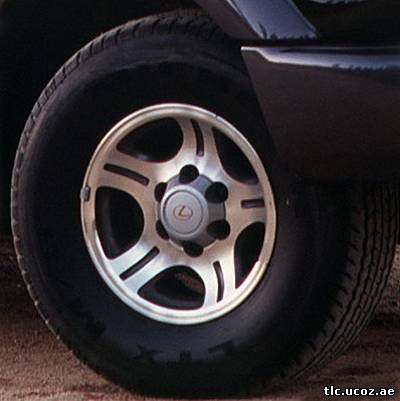- Toyota 40th anniversary land cruiser
- Curbside Classic: 1997 Toyota Land Cruiser 40th Anniversary Edition – Conquering The Serengeti Or The Parking Lot At Bloomingdale’s
- Toyota Land Cruiser 80 40th Anniversary 1997 года (фото 2 из 6)
- Другие галереи Toyota Land Cruiser
- Другие галереи Toyota 1997 года
- Модели Toyota
- Популярные галереи
Toyota 40th anniversary land cruiser
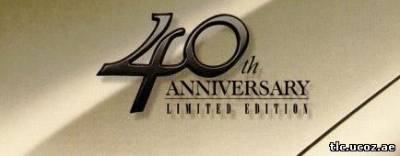
В 1997 году компания Toyota в честь сорокалетнего присутствия Land Cruiser на американском и австралийском рынке выпустила юбилейную версию Land Cruiser 80. В США она называлась «40th Anniversary Limited Edition « в Австралии «40th Anniversary Commemorative Edition « .
Произведено 4744 единиц.
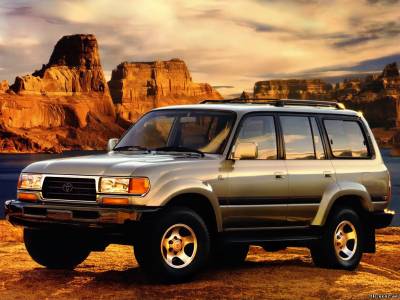
К этому моменту в США было продано около 293 тысяч «Крузеров», а по всему миру 2.7 миллиона автомобилей этой модели. Произведено 4744 единиц «40th Anniversary Edition». Посмотреть каталог юбилейной версии вы можете здесь Каталог Land Cruiser 80 «40th Anniversary Limited Edition»
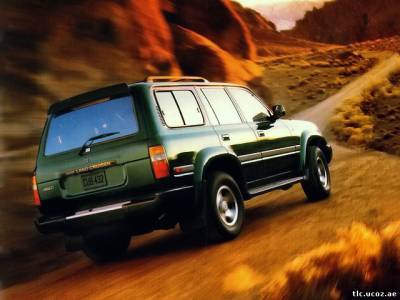
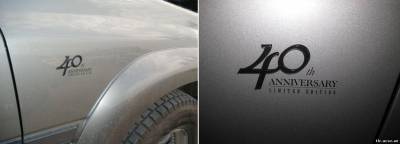
- Вход без ключа (чип ключ)
- Передний и задний дифференциал
- Рейлинги и подножки окрашены в чёрный перламутр
- Все внешние эмблемы Toyota окрашены в чёрный перламутр
- Два варианта окраски: тёмно-изумрудный перламутр и «античная легенда» (бежевый перламутр)
- Интерьер
- Индивидуальная номерная табличка «40th Anniversary Limited Edition» на центральной консоли возле рычага КП с указанием номера экземпляра
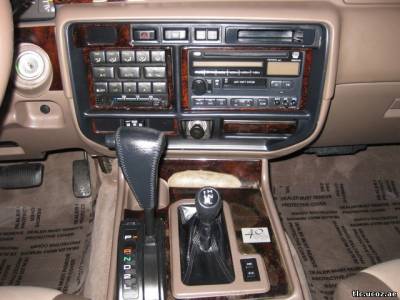
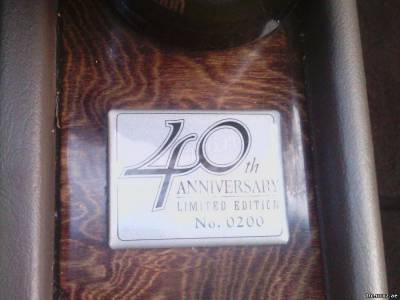

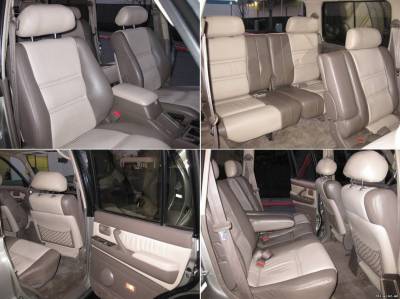
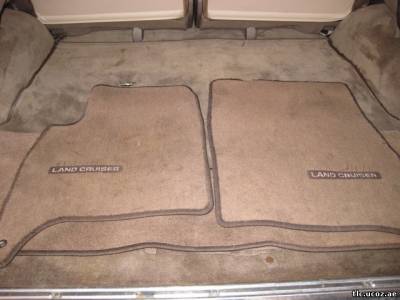
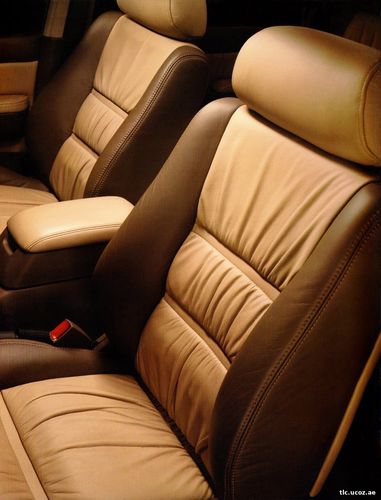
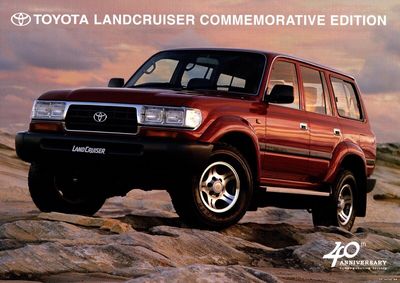
Австралийские версии радикально отличались от американских версий. Предлагались в двух вариантах: первая GXL без подушек безопасности, вторая Wagon с подушками безопасности водителя и пассажира. Предлагались только с бензиновым мотором 1FZ-FE, с автоматической или механической КП, для Wagon предлагалась только автоматическая КП.
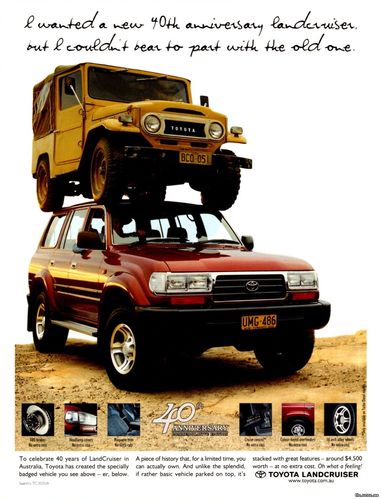
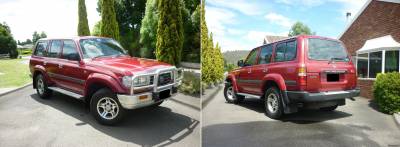
- Экстерьер
- Наклейка «40th Anniversary Commemorative Edition« на двери багажника.
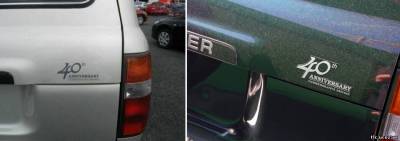
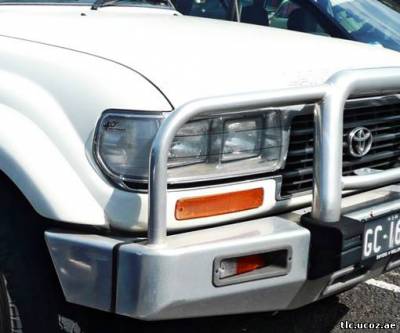
- Люк (только для Wagon)
- Новые задние дисковые тормоза
- Рейлинги на крыше (только для Wagon)
- Интерьер
- Велюровый салон. Предлагался в двух тонах: светло-голубой или серый
- Наклейка «40th Anniversary Commemorative Edition« на потолке возле лампы освещения, Alti-Metera и указателем топлива второго бака
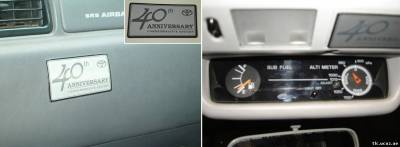
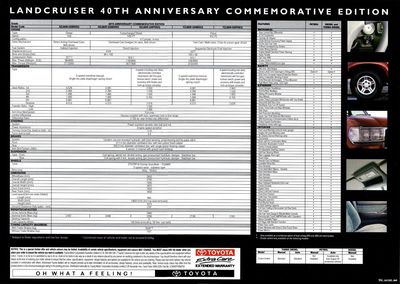
Автор статьи: Александр Киселёв (Sasha)
Curbside Classic: 1997 Toyota Land Cruiser 40th Anniversary Edition – Conquering The Serengeti Or The Parking Lot At Bloomingdale’s
(first posted 12/8/2015) The Toyota Land Cruiser is inarguably one of Toyota’s most iconic nameplates. Continuously produced since 1951 (Toyota’s longest-running model) with over 5 million units produced, and currently sold in 146 countries, the Land Cruiser has carved out a successful audience around the world as a reputable, go-anywhere vehicle. But here in the U.S., despite our love for big SUVs, the Land Cruiser never truly found the same success as its rivals achieved in this market, with sales drastically falling to historic lows in recent years.
Land Cruisers of past, while never setting any sales records, were considerably more successful. Particularly the J80 and J100 series, the former of which was released in 1990, when gas was cheap and when SUV fever was taking off in the United States. Over its J60 predecessor, the J80 grew several inches in every dimension and rode on a 4.7-inch longer wheelbase.
Style-wise, the J80 was an attractive, inoffensive update of its predecessor. Although it designers greatly softened the straight-edged 1980s look of the J60 with rounded corners abounds, the basic boxy shape still remained, making the car unmistakable as a Land Cruiser. Prominent flared wheel arches, thick lower bodyside moldings, and body-colored running boards gave it the cladded look then popular on high-end automobiles and SUVs. Land Cruisers sold in other markets, however, typically did without these prosthetics.
Unlike most competitors, who featured electrically-operated pop-out style third row vent windows, Toyota stuck with the center divided sliding side windows for one more generation. Power first and second row windows were now standard on all U.S. market Land Cruisers, with a power moonroof an extra cost option.
Standard power initially came from the same 4.0L inline-6, making 155 horsepower and 220 pound-feet of torque. In other markets, two 4.2L diesels (one a turbo) were available. Beginning in 1993, a larger 4.5L inline-6 replaced the 4.0L in North America. Producing 212 horsepower and 275 pound-feet of torque, the 4.5L was a welcomed addition, though Toyota never offered a V8 in this generation Land Cruiser, something its competitors boasted.
Fuel economy for the 4.5L was rated at only 12 miles per gallon city/15 highway. While these numbers were likely enough for some people to balk at, with gas prices close to $1 per gallon for regular (which was fine for use in the Land Cruiser), it was very possible to completely fill the Land Cruiser’s 25.1 gallon tank for under $30. For comparison, a 2016 Land Cruiser only manages 13 city/18 highway, and despite gas prices at their lowest in recent memory, owners of modern Land Cruisers are still taking a significantly greater blow to their wallets at the pump.
At the time of introduction, all North American and European-spec J80 Land Cruisers featured full-time four-wheel drive as standard equipment. A two-speed transfer case with separate gear shifter allowed the driver to directly shift into LO-range 4WD for serious off-roading. Depending on engine, some Land Cruiser models sold on other continents still offered part-time four-wheel drive. Anti-lock brakes (with or without available electronic front and rear differential locks) were a new option in 1993, and were standard on all North American-spec Land Cruisers.
On the inside, the J80 boasted a vastly refined interior with better ergonomics and higher-grade materials. An imposing rounded instrument panel (owing a strong resemblance in shape to the upcoming XV10 Camry’s) placed a wide center stack slightly angled towards the driver for easier view and reach. A redesigned dash came in 1995, bringing with it dual front airbags and a new instrument panel. Despite this, most controls were carried over.
A large center console with storage compartment and center armrest was standard between the front two buckets. Full-length armrests with integral pull handles now graced the front and rear doors, with small lower door storage compartments up front. Those expecting to enjoy a beverage behind the wheel were best to stick with bottled water or Fruitopia (after all, this was the ’90s), as cupholders were nowhere to be found.
While somewhat utilitarian interiors were still the norm for Land Cruisers elsewhere in the world, in the U.S. it became increasingly common to find J80s loaded with numerous luxury options, such as leather, 8-way power seats, automatic climate control, wood trim, security system, and alloy wheels, all a nod to the Land Cruiser’s growing popularity among affluent suburban families who rarely took their SUVs off-road.
This shift towards highly-contented, status symbol SUVs even spawned the creation of the badge-engineered Lexus LX450. Arguably the first full-size SUV from a luxury brand, it predated the Navigator and Escalade by two and three years, respectively. Despite the introduction of the Lexus LX450, Toyota chose not to diminish the Land Cruiser’s very high-aiming ambitions, releasing the 40th Anniversary Edition in 1997.
Commemorating Toyota’s 40 years of selling cars in the United States, the Land Cruiser 40th Anniversary Edition featured many popular options as standard, along with a few unique extras, and retailed for $48,790 ($72,300 in 2015 dollars), roughly $7,600 more than a base Land Cruiser and $90 more than a base LX450.
Among the 40th Anniversary’s standard equipment, included power seats, automatic climate control, leather-wrapped steering wheel, and 9-speaker premium audio system, along with unique alloy wheels, two-tone leather seats, accent-color bodyside moldings and bumpers, and special badging on the exterior and floor mats. Only 4744 of these editions were produced, in either Antique Sage Pearl or this car’s Emerald Green.
J80 production ended in December 1997 in Japan, although this series continued to be produced and sold in Venezuela until 2008. The J80’s successor, the J100 Land Cruiser, arrived in 1998. Continuing on the J80’s path towards greater comfort and luxury, the J100 boasted numerous refinements to the interior, ride, and technology, as well as offering a V8 for the very first time. Thanks to these welcomed updates, sale of the J100 remained brisk until the early-2000s, when rising fuel prices began to threaten the popularity of all large SUVs.
The J100’s successor and the current Land Cruiser sold in the United States is the J200, which entered production in 2007 and first arrived on U.S. shores as a 2008 model. Despite its significant redesign, the J200 has never achieved the success of its predecessors. Land Cruiser sales in the U.S. haven’t topped 4,000 units since 2005, which is somewhat understandable, given higher gas prices and lower large SUV sales across the board.
Additionally, the 2008 J200 was priced nearly $10,000 above the outgoing J100, and its release coincided with the Great Recession. Despite gas prices falling in the past several years, the Land Cruiser has only seen very minimal updates since 2008. Even the 2016 facelifted model can’t hide the car’s age, with an interior looking painfully unworthy of its $83,000 price tag.
What’s worse is that the related Lexus LX570, with its substantially more luxurious interior, bolder styling, and far more glamorous persona stickers for a mere $5K more. And let’s face it, most people purchasing an $85K SUV care about snob appeal, which the Lexus has infinitely more of. It’s no wonder that the LX consistently outsells its less posh sibling by nearly a 2 to 1 margin most years.
Those looking for a large, unpretentious Toyota SUV are likely to purchase the Sequoia, which boasts significantly more interior space, the same 5.7L V8, and a starting price that’s almost half that of the Land Cruiser. That being said, the current generation Sequoia has similarly received little in the way of updates since its 2007 launch, and despite its higher sales in the U.S., its days could be numbered. Sold in only select markets, the Sequoia is part of a vehicle class with ever diminishing returns. A full redesign just isn’t worth it for Toyota, which doesn’t have a significant market share of this segment.
Given the functional demand for off-road vehicles like the Land Cruiser in many parts of the world, not to mention its long heritage, it’s unlikely the Land Cruiser will be disappearing anytime soon.
Toyota Land Cruiser 80 40th Anniversary 1997 года (фото 2 из 6)
Галерея автомобиля Toyota Land Cruiser 80 40th Anniversary 1997 года включает в себя 6 оригинальных изображений высокого качества.
По этим изображениям вы можете ознакомиться с внешним видом автомобиля, узнать его особенности и отличительные черты, которые выделяют этот автомобиль Toyota от других автомобилей.
А также вы можете скачать фотографии абсолютно бесплатно и использовать их как обои для рабочего стола с изображением автомобиля Toyota Land Cruiser 80 40th Anniversary 1997 года, нажав на иконку в правой нижней части изображения.
Изображенный на фотографиях автомобиль был выпущен в 1997 году.
Другие галереи Toyota Land Cruiser
Другие галереи Toyota 1997 года
История крупнейшей японской компании по производству автомобилей «Toyota», началась в.
Модели Toyota
Популярные галереи
- Chery Storm 2 2008 года
- Nissan Terrano II 5-Door 1999 года
- Mitsubishi Colt Galant GS Sedan 1969 года
- Ferrari 641/2 1990 года
- Ferrari 365 GTB/4 1971 года
- Jeep Wagoneer Limited 1984 года
- Bristol LH6L ECW 1969 года
- Oldsmobile Toronado Trofeo 1990 года
- E-ONE Titan Force 4×4 1986 года
- Mercedes-AMG G63 by Inkas 2018 года
- Hyundai Creta 2018 года







При использовании информации в электронном виде (интернет-сайт, электронный файл и т. п.) в каждом случае необходимо размещение активной гиперссылки на главную страницу Сайта или на страницу размещения соответствующего материала.
Все замечания и вопросы по сотрудничеству направляйте по электронной почте: auto@vercity.ru.
Обращаем ваше внимание на то, что изображения являются чьей-либо собственностью и некоторые из них добавлены посетителями сайта. Администрация сайта не располагает информацией о правомерности публикования этих материалов.
Все изображения размещены в ознакомительных целях.
